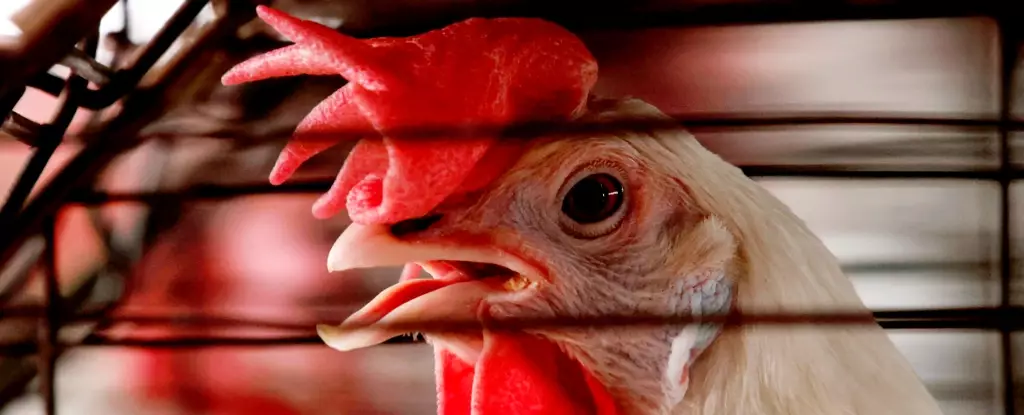The avian influenza virus, particularly the H5N1 strain, has emerged as a critical concern among health experts worldwide. With mutations observed in the virus, its capacity to affect not just birds but also mammals raises alarms about a potential pandemic threat. The recent spread of H5N1 among dairy cattle in the United States signals a new phase in this ongoing health crisis. While authorities maintain that the general public’s risk remains low, there is an unsettling undercurrent suggesting that the virus may soon evolve into a more human-transmissible form. The situation calls for a deeper examination of the implications surrounding this evolving pathogen.
Since its emergence in the late 1990s in China, H5N1 has exhibited a worrying trend of geographical expansion, affecting various species and ecosystems, including those previously untouched environments such as Antarctica. The World Organisation for Animal Health reports staggering losses, with over 300 million poultry culled, indicating the virus’s severe impact on the bird population alone. Additionally, the collateral damage extends to mammals that prey on infected birds, leading to mass die-offs in species like seals. This widespread devastation underscores the necessity for increased surveillance and response strategies.
With 58 confirmed human cases of bird flu in the United States this year, epidemiologists are becoming increasingly cautious about the potential for wider transmission. Concerns are particularly acute regarding individuals who did not have direct contact with infected birds or environments. Antibody testing conducted among dairy workers in states like Michigan and Colorado revealed that approximately 7% had been exposed to the virus, signaling a necessity for heightened awareness in agricultural settings.
Meg Schaeffer, an epidemiologist from SAS Institute, articulates growing fears that “avian flu is knocking on our door.” The international public health community is keeping a watchful eye on the virus’s evolutionary trajectory, as the possibility exists that the H5N1 strain could soon acquire the ability to spread easily among humans. The implications of such an evolution are dire; with no inherent immunity within the human population, an outbreak could lead to catastrophic consequences.
Recent studies have provided new insights into the genetic evolution of the bird flu virus, indicating that it could be just a single mutation away from significantly enhancing human infectivity. Concerns were raised after genetic sequencing indicated that the strain infecting U.S. cows was adapting to bind more effectively to human cells. Virologist Ed Hutchinson highlights that the mere proximity of this strain to a more dangerous form is alarming. Nevertheless, he and other scientists caution that while the disease has the potential to become a major concern, multiple barriers currently exist that restrict its transmission among humans.
However, as various animal species become infected, the likelihood of the virus adapting to spread among humans increases significantly. History has shown us that zoonotic diseases—those that cross species barriers—can lead to severe outbreaks. The consequences of such an outbreak would not only hinge on increased infection rates but also on the clinical severity of the H5N1 strain among humans; nearly 50% of human cases since 2003 have resulted in death, according to the World Health Organization.
While there is an air of caution permeating the discussions surrounding H5N1, not all news is bleak. Experts like virologist Tom Peacock suggest that the established antiviral treatments and vaccines available for bird flu provide a layer of defense that was absent in the early days of the COVID-19 pandemic. This aforementioned preparedness marks a substantial shift in how public health authorities may respond to an emerging threat.
Nevertheless, this crisis amplifies the need for proactive measures such as improved testing protocols and international sharing of vital data. It is encouraging that the U.S. Department of Agriculture has initiated plans to test the milk supply for bird flu, with particular vigilance directed towards unpasteurized products, which have previously been found contaminated. Coordinated efforts at both national and global levels remain crucial in mitigating the risks posed by potential outbreaks.
As the global community grapples with the evolving threat of bird flu, the lessons from previous pandemics accentuate the importance of vigilance. Continuous research, disease monitoring, and public education are integral components in the fight against the emergence of new infectious diseases. The message is clear: preparedness today could prevent a pandemic tomorrow. The interconnectedness of our ecosystems and the complexity of our health systems necessitate a united approach to health security in an increasingly unpredictable world.

